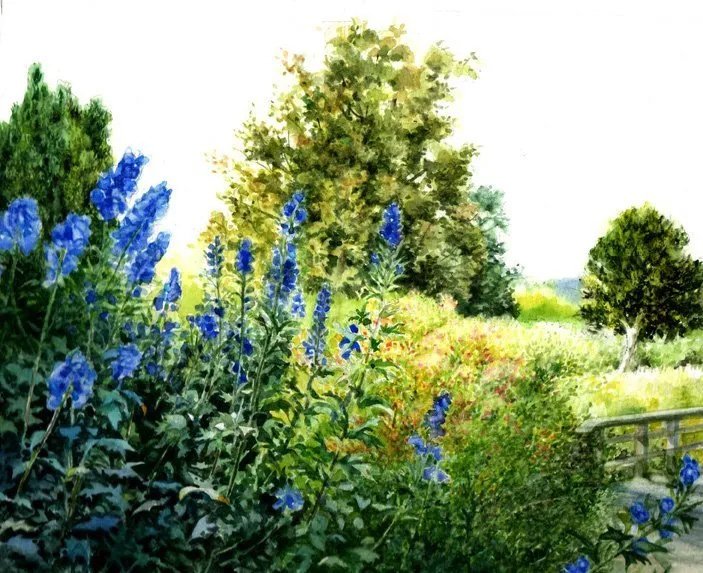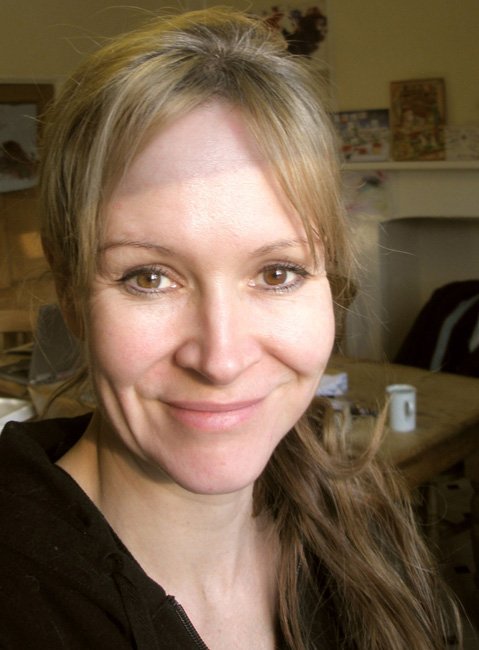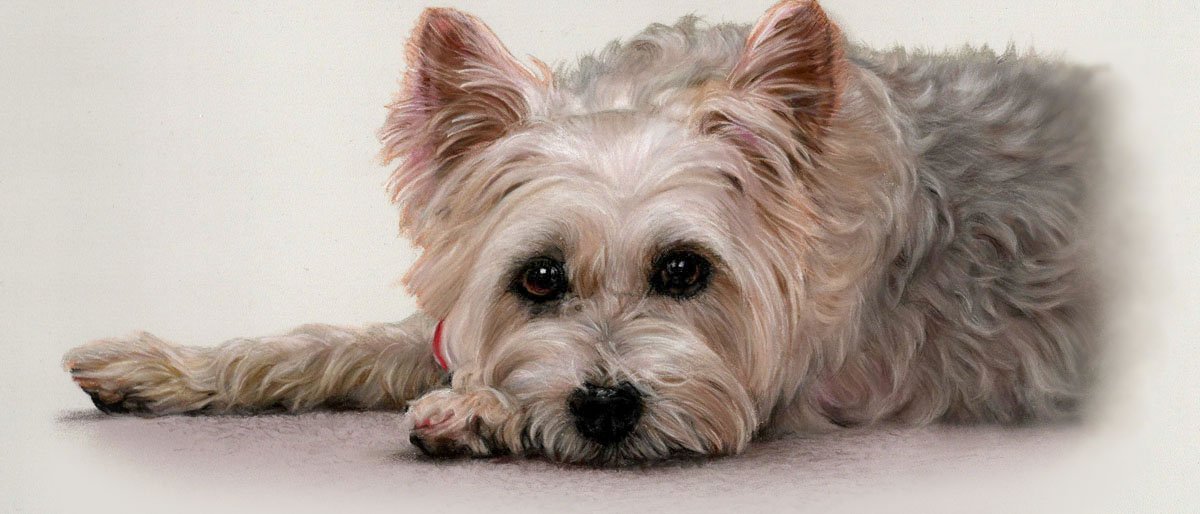
The secret to mixing perfect greens is *VIRIDIAN green!
( Phthalo green is the equivalent if you’re using oil or acrylic)
The greens in the image are a small example of what you can mix using viridian green.
Viridian green may not took very appealing when it comes out of the tube all dark and ugly, but viridian is the ideal ‘base’ green from which you can mix a full range of greens from the palest yellow/green, through vivid lime, grass green, olive green to the dark blue/green of pine trees with a million subtle variations as you go.
One of the first things you will notice about viridian green is that you can’t use it un-mixed straight from the tube. It looks too artificial so you are obliged to mix it with the other basic colours on your palette, giving you all the greens you’ll ever need.
I favour a very limited palette of five colours – BURNT UMBER (brown), GAMBOGE YELLOW (yellow), ROSE MADDER (red), ULTRAMARINE (blue) and VIRIDIAN (green). These colours will enable you to mix almost any other colour you will ever need and I will cover this in a future article.
Add a little or a lot of gamboge yellow to your viridian and make vivid greens.
Add a little burnt umber (and maybe a little gamboge yellow) for olive greens.
Add water (for watercolour) or white for oil and acrylic to lighten the tone and de-saturate.
Add a little ultramarine to your viridian and you’ll make a range of blue/greens from sea green to turquoise. Add a little rose madder to viridian and you have a range of neutral tones that can lean either towards warm or cold, depending on the mix (more rose madder=warm) And if that wasn’t enough! You can even mix a ‘black’ with equal amounts of rose madder and viridian full strength!
The benefits of using viridian instead of pre-mixed greens (Sap and Hookers) are that you ALWAYS have variety in your greens. It also beats mixing greens from yellow and blue because using the blue/yellow method you’re obliged to have both a warm and cold yellow and a warm and cold blue on your palette (that’s four colours!) to get the full range of greens that you can get from mixing viridian simply with the colours you already have on your palette.
If you haven’t used viridian to mix greens before I thoroughly recommend spending a few minutes experimenting! I’ve never found a green I couldn’t mix!

*Viridian green hue is the modern equivalent of original Viridian green. The term ‘hue’ when used in a paint name refers to the fact that the colour is identical or nearly identical to the original recipe but is made using modern chemicals or pigments that are either cheaper, safer or more stable.

